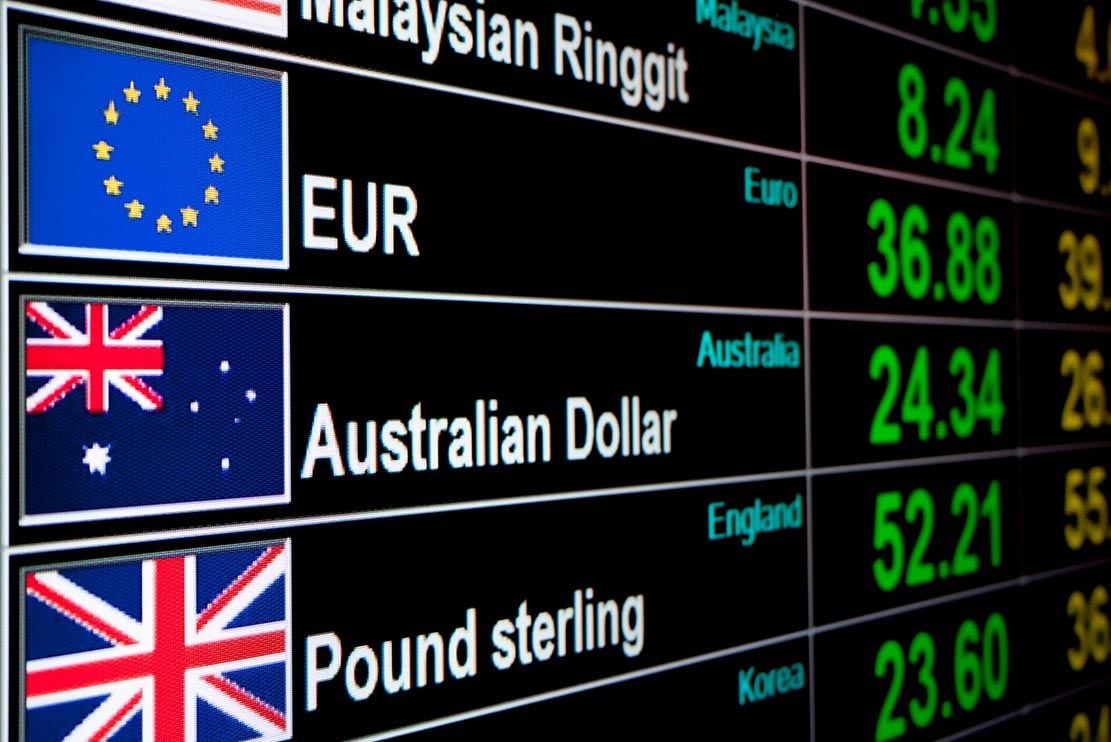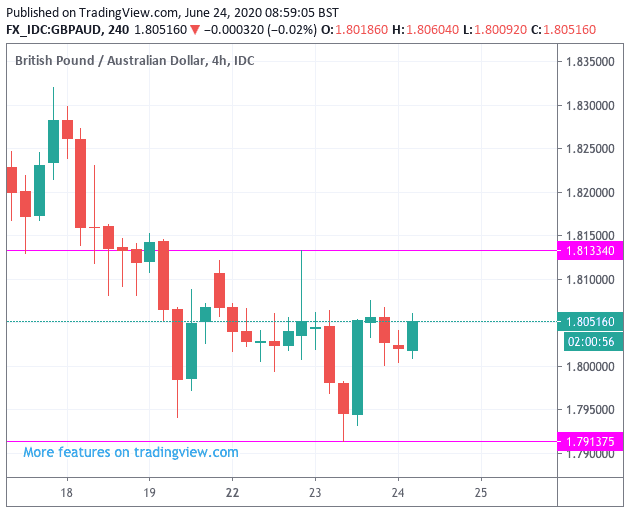Pound-Australian Dollar Better Supported but Losses Still Favoured Over Coming Weeks
- GBP/AUD's new near-term levels to watch
- AUD strength on hold as market's await fresh catalyst
- CBA says superannuation drawdowns unlikely to impact AUD

Image © Adobe Stock
The Pound has settled into a sideways range against the Australian Dollar in the near-term and further stability could extend over coming hours and days as a multi-week period of decline pauses.
The Pound-to-Australian Dollar is quoted at 1.8047 at the time of writing in mid-week trade, placing it towards the middle of this week's range which is loosely defined as being located between 1.8133 and 1.7913.
The foreign exchange market place is currently looking for its next catalyst and until this is provided we could well see GBP/AUD maintain ground within this area. A break above 1.8133 would certainly catch our attention as it would suggest that the consolidative period is potentially shifting into a more constructive outlook that could favour a rebound in Sterling.
However, those looking to transact in GBP/AUD should be aware that the trend remains firmly pointed towards the downside and when the next catalyst does come along it is, on balance, likely to result in further Australian Dollar strength.
The Australian Dollar's recent reluctance to advance further against the Pound ultimately lies with a consolidation in the recent global equity recovery story: the stock market rebound has cooled since investors became concerned about news of pockets of covid-19 outbreaks in the U.S.
This spike in concern ties in with the GBP/AUD consolidation, confirming that bad news on covid-19 and the global economy is ultimately supportive of the exchange rate as the Aussie Dollar remains highly sensitive to broader sentiment.
"AUD/USD traded firm in the Asia session against a soft USD. The ongoing recovery in the global economy is weighing on USD. Nevertheless, further spikes in coronavirus infection rates can temporarily support USD," says Carol Kong, Strategist at Commonwealth Bank of Australia. "In our view, the outlook for the global economy and Australia’s bulk commodity prices will remain the dominant drivers of AUD in coming weeks. We don’t expect the second tranche of early Australian super withdrawals to materially influence AUD."
Secure a retail exchange rate that is between 3-5% stronger than offered by leading banks, learn more.
While CBA are coy on superannuation's having an ability to impact AUD, we reported Tuesday that researchers at Goldman Sachs say a significant pillar of support might well have been derived from the Australian government's decision to allow citizens to draw down their pension pots as part of efforts to mitigate the economic downturn caused by the covid-19 pandemic.
As part of their response to the covid-19 crisis, the Australian government allowed workers to take up to A$20K out of their pension pot (superannuation savings) in two A$10K tranches over the course of the next two years.
The two periods are between mid-April and fiscal-year-end and in the next fiscal year which falls after June 30.
With the second drawdown period approaching, the Australian Dollar could see "potential near-term support ahead," according to Michael Cahill, an analyst at Goldman Sachs.
"In the weeks leading up to April 20 - the start of the first withdrawal period - AUD was the second-best performing currency globally," says Cahill. "Historical trading volumes around that period suggest the rally was primarily driven by pension funds selling overseas equities and converting the returns (of unhedged holdings) to domestic currency."
"We think we could see a similar dynamic in the coming week or so, ahead of July 1, as funds prepare for another round of withdrawals," says Cahill.
Australia has the world’s fourth-largest pension system with more than A$3TN in assets under management. The government predicts its decision to allow people in financial distress to withdraw from their superannuation accounts could result in a A$30BN injection into the economy.
"Although there may be more limited need for foreign asset sales than in the first round (given some people that made early withdrawals had less than A$10,000 in their account and, therefore, cannot participate in the second round), we think net short AUD positioning leaves scope for a potentially quick reversal on any upside pressure," says Cahill.











